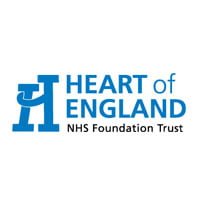Heart of England NHS Foundation Trust is aiming to complete a project to digitise all of its 1.7m paper patient records by 2015.
The trust signed a five year contract with EDM Group last year to digitise its entire paper patient record archive.
EDM began scanning the records in April 2011. But the trust’s medical director, Dr Roger Stedman, said the project had been ‘ramping up’ over the past few months.
“Now almost every clinician would have had access to a digital record,” he said.
He told eHealth Insider that a key driver for the digitisation project was that the trust didn’t want to commission a new building to house its patient records.
However, he also said the move was part of the trust’s push to improve patient safety.
“[With paper] there’s only one folder, which means that only one person can access the record of care at any one time.
"For us, there have always been issues of the medical record not being available when it’s required,” he said.
“If the doctor doesn’t have the record in front of them, if it just isn’t available when it’s needed, the doctor has to rely on the information that they can get from the patient at the time of the consultation.”
He said most clinicians could see the benefit of having digital medical records – acceptance was "rapid" and "improving all the time."
However, he said there had been some disappointment about the front-end used to view the digital records, which are accessed through the trust’s web-based iCare ‘vortal’.
Dr Stedman said some patient records could run to 600 or even 1,000 pages, which made it difficult for the vortal to load them.
The trust is working to improve the specification of its web browser to resolve the problem, and is also in the middle of commissioning a new supplier to upgrade its electronic patient record systems.
The trust has introduced ‘smart stationary’ as a way of reducing paper, which includes putting barcodes on remaining paper records to make it easier to locate and scan them.
However, Dr Stedman said the trust was going to be “a bit more ambitious” by looking at digital dictation and data capture technologies to eradicate paper going forward.
He said the trust was already ‘paper-light’, and was three quarters of the way to having a full electronic patient record. “The digital patient record is just another electronic system which adds to that,” he said.

